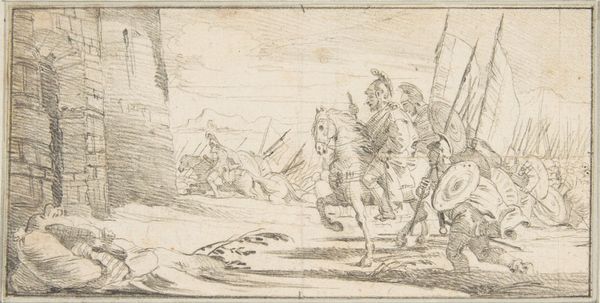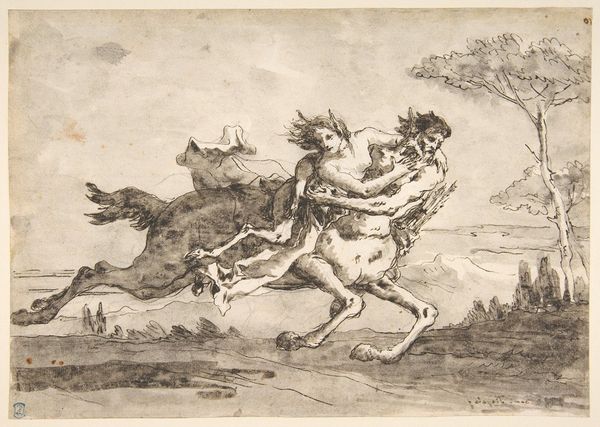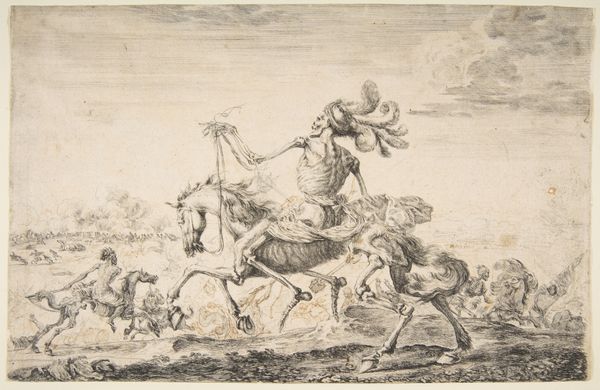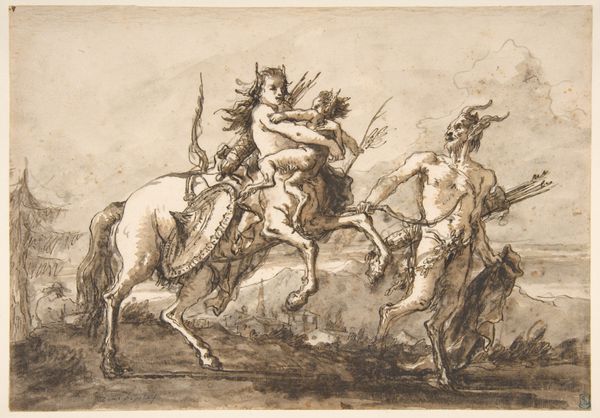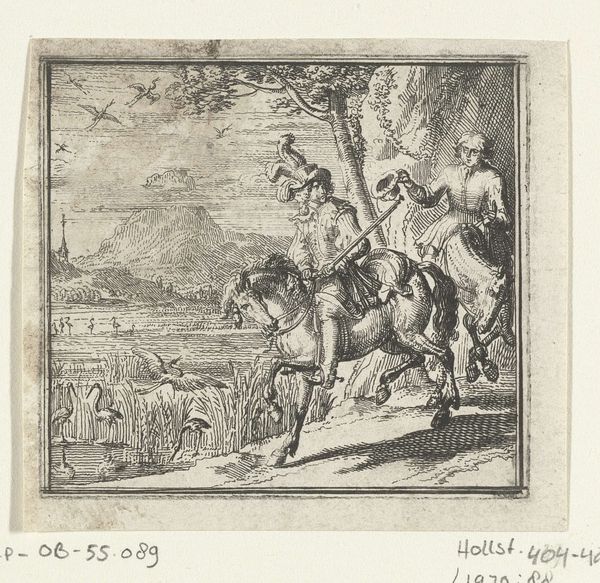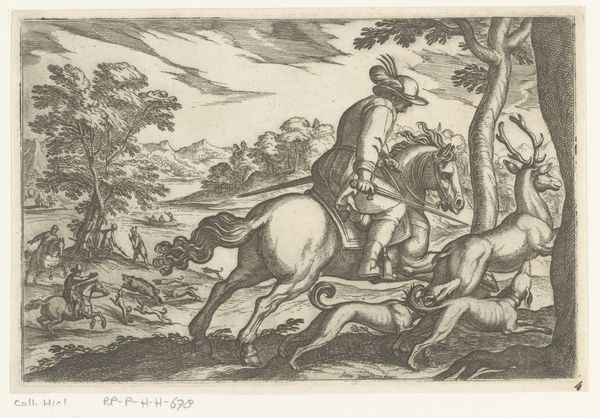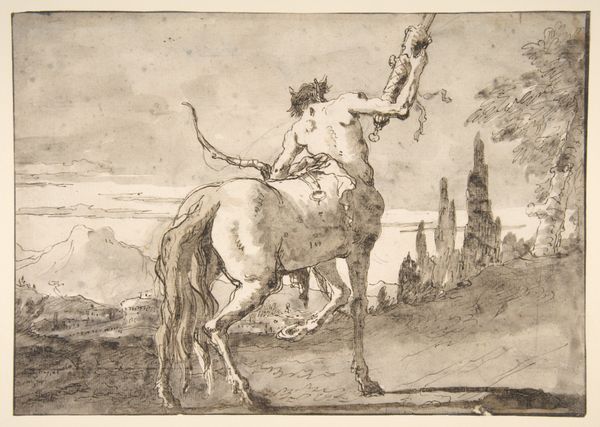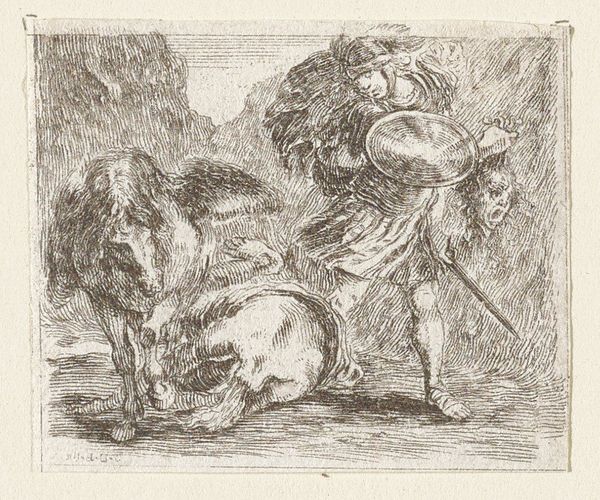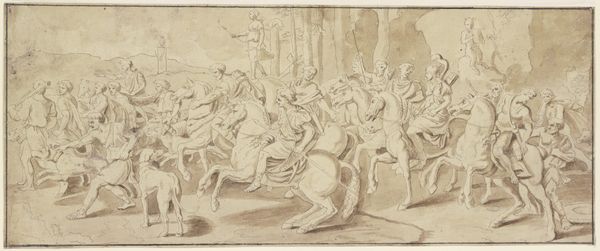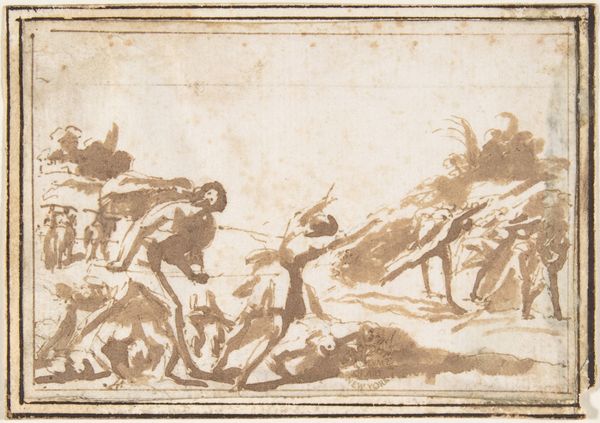
Copyright: Public Domain: Artvee
Editor: So, this is Giovanni Domenico Tiepolo’s "Centaur with Shield and Two Satyresses," a charcoal drawing done sometime between 1727 and 1804. There's almost a theatrical quality to it, a posed tableau within a landscape. How do you interpret this work, particularly in light of its historical context? Curator: I see Tiepolo here engaging with classical mythology, but also subtly subverting its traditional power dynamics. Look at the satyresses – traditionally figures of unbridled sexuality – their gaze almost feels confrontational, challenging the male gaze often prevalent in such depictions. Considering Tiepolo's era, could this be read as a commentary on emerging social challenges to established norms, a questioning of the perceived natural order of things? Editor: That's a compelling point. I hadn't considered the satyresses as challenging, more like...observing. But your interpretation makes me reconsider their positioning. What about the Centaur's shield? Does it speak to a need for protection in the face of societal change? Curator: Precisely! The shield could symbolize a defensiveness against the shifting landscape of social and political thought. The centaur, a figure caught between two worlds—human and animal—perhaps embodies the anxieties of a society grappling with changing definitions of identity and belonging. It prompts the question: who needs protection from whom, and why? Editor: I’m curious about something: gender and power seem central in your analysis. Is it reading too much into it to think of the figures in relation to class too? Curator: Not at all. Think about the patrons of art like this – typically wealthy aristocrats. By subtly critiquing power structures, Tiepolo may be engaging in a complex dance: entertaining his patrons while simultaneously offering a visual language for questioning the status quo. Is he reinforcing, or undermining, the accepted norms? What do you think? Editor: Wow. I initially saw a mythological scene, but now I see a much more complex narrative about power, identity, and societal anxieties baked right in. Thank you for widening my view. Curator: And thank you for seeing in it the spark for that conversation.
Comments
No comments
Be the first to comment and join the conversation on the ultimate creative platform.
